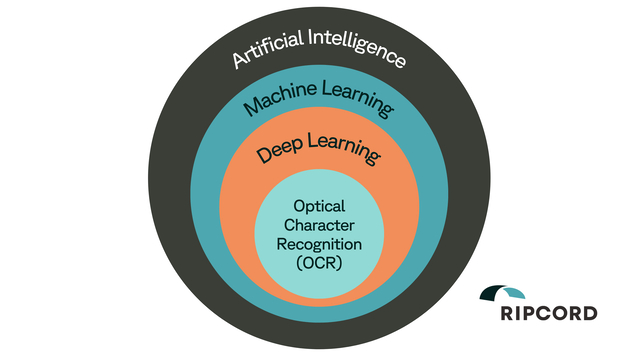
Modernizing Document Management: The Power of OCR in Robotic Digitization
If you follow technology and business news, you've likely heard of the term "optical character recognition" (OCR) before. OCR frequently appears alongside other technology buzzwords like machine learning (ML), deep learning (DL), and artificial intelligence (AI). But how does OCR differ from these concepts, and what are its practical applications today?
Here’s a brief primer designed to give you a working knowledge of OCR and its role in modern business, particularly in the realms of robotic digitization and intelligent document processing.
What is OCR and How is it Used in Document Digitization?
Optical character recognition (OCR) is a technology used to convert different types of documents, such as scanned paper documents, PDFs, or images captured by a digital camera, into editable and searchable data. As David Young, Senior Staff Engineering ML Tech Lead at Ripcord, explains, OCR "attempts to extract text from an image like a scanned document or photo."
In business, OCR is crucial for digitizing, classifying, and extracting valuable data from large volumes of documents. It can distinguish between similar-looking words or characters, such as zeros and the letter O, by using context to ensure accuracy.
OCR, AI, ML, and DL: Are They Synonyms?
While these terms are interconnected, they are not synonymous. OCR is often a task within deep learning (DL), which is itself a subset of machine learning (ML). ML allows systems to learn and improve automatically over time, while DL focuses on using neural networks to simulate human decision-making.

Beyond Character Recognition: The Power of Context
OCR goes beyond simply recognizing characters; it incorporates machine learning to understand context. For instance, in an unstructured document containing the handwritten sentence "I threw the ball to my dog," OCR must identify that "dog" is indeed "dog" and not "cat" or another similar word. This contextual understanding is a strength of ML and DL, allowing OCR to deliver more accurate results.
How Ripcord Utilizes OCR for Customers
At Ripcord, we leverage OCR alongside advanced technologies to provide our clients with high-accuracy document digitization and intelligent data extraction. Our ML algorithms use deep learning on a vast, continuously growing dataset, ensuring precision in OCR tasks. Ripcord’s solutions guarantee that digitized documents are not only accurate but also enriched with contextual insights.
By employing OCR, Ripcord transforms client data into structured, searchable, and actionable information. This process not only saves countless personnel hours but also reveals previously inaccessible insights due to unstructured text or sheer document volume.
Pull the Ripcord to see what we can do for your organization’s document management needs. Gain control of your data with Ripcord.
/Ripcord%20Logo%20-%20Color%2011.png?width=2000&height=620&name=Ripcord%20Logo%20-%20Color%2011.png)




.jpg?quality=high&width=596&name=Revolutionizing%20P%26C%20Insurance%20The%20Power%20of%20Intelligent%20Document%20Processing%20and%20AI%20-%20Ripcord%20(1).jpg)